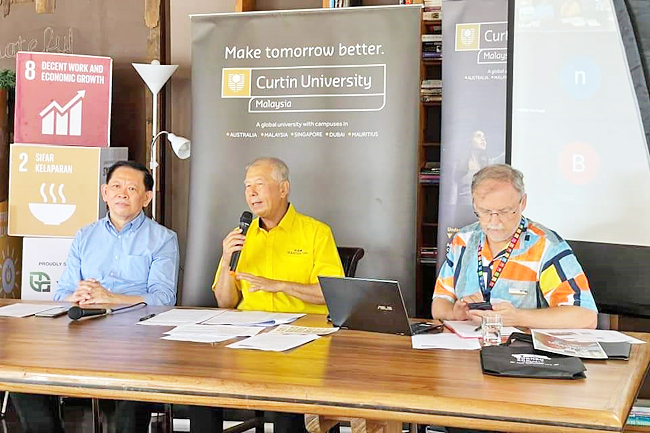Sarawak Deputy Minister for Tourism, Creative Industry and Performing Arts Datuk Sebastian at a roundtable discussion during the Borneo Sustainable Development Goals (SDG) Summit in Miri last Saturday said that the shortage of skilled labour is one of the biggest challenges in hospitality industry in Sarawak, Malaysia post-COVID-19.
“Tourism is one of the major economic sectors in Sarawak’s Post Covid-19 Development Strategy (PCDS) 2030 and initiatives are currently being undertaken to address this issue,” he said.
These initiatives, he said, include policies and financial incentives by the Sarawak government to local tourism industry players such as the disbursement of Bantuan Khas Sarawakku Sayang (BKSS) 1.0 to 9.0, with a total expenditure of MYR6.7 billion.
The policies and incentives incorporate the reskilling and upskilling programmes for tourism players, increasing flight frequency, providing discounts on tours and hotels under the ‘Sia Sitok’ packages, as well as reinforcing capacity building through the Online Ecosystem Fund.
He added, “Considering the increase of visitor arrivals at over 320 per cent this year compared to the same period in 2022, the prospect of tourism recovery is possible and therefore, stakeholders and the young people in Sarawak must have faith in our tourism industry.”
The roundtable discussion was facilitated by Dean of Faculty of Business of Curtin University Malaysia (Curtin Malaysia) Professor Andreas H Zins.

Professor Zins highlighted the PCDS 2030’s projection of an annual growth in tourism demand of seven to eight per cent to reach pre-COVID levels by 2025.
According to him, the tourism sector in Sarawak will need 17,500 more employees every year to sustain this growth. Even in the unlikely event all the unemployed in Sarawak joined the tourism sector, the labour market would run dry within just a few years.
Professor Linchi Kwok from The Collins College of Hospitality Management highlighted a similar situation in the United States (US) and the European Union (EU).
He said that in July 2022, the US recorded 10.9 million new job openings with only 8.7 million unemployed.
The World Travel & Tourism Council (WTTC) meanwhile, reported a labour shortfall in August 2022 where one out of 15 openings in the US (one out of six in the accommodation sector), and one out of nine in the EU (one out of three in the travel sector and one out of five in the transportation sector) could not be filled.
Professor Zins added that his colleagues at other Curtin campuses in Australia, Singapore and Mauritius reported similar problems.
He said that many hospitality workers were not keen to go back to their old jobs due to low salaries, inflexible working hours and conditions, discrimination of women, lack of training opportunities and further education, age discrimination, and a bad image of the entire industry.
Speaking on the labour shortage, Malaysia Association of Hotels Sarawak Chapter President John Teo said that 150,000 official migrant workers and another estimated 150,000 unofficial workers left the state during and after the pandemic, compounding the labour situation.
In addition, a huge number of Sarawakians are still registered as residents while working either in West Malaysia or abroad.
Teo added that many workers went to Kalimantan due to attractive salaries which are said to be twice or three times higher. This is a reminder to the government, industry stakeholders and players to stay competitive, he added. He said that businesses and employers must do their part to increase the attractiveness of jobs in the tourism industry by listening to their employees.
The panel also urged governments to help project a better image of working in the tourism sector by giving equal consideration to educate the public, company owners, young students, fresh graduates, parents, managers, both the employed and unemployed.
Professor Zins announced that roundtable discussions will continue this year and different tourism stakeholders will be invited.
He concluded, “We are striving to deliver sustainable solutions and creating more attractive jobs for more people and ensuring that the visitor economy does not fall beyond 12 per cent of Sarawak’s gross domestic product will be our focus.”





